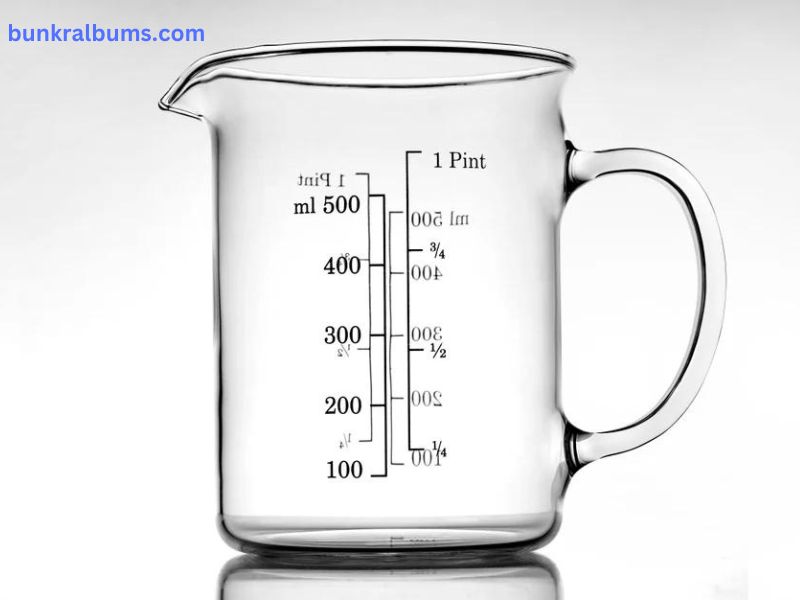The measurement of ounces in a pint might seem straightforward, but it can be a bit complex due to differences between the U.S. customary system and the British imperial system, as well as variations depending on whether the pint is liquid or dry. This article aims to clarify the concept, offering a detailed exploration of how many ounces are in a pint, how these measurements are used in everyday life, and how to convert between them.
The Pint: A Historical Overview
Before diving into the specifics, it’s helpful to understand the origins of the pint as a unit of measurement. The pint is derived from the Latin word “pincta,” meaning “painted,” a term used for the painted marks on measuring vessels. It has been used in England since at least the 14th century and has evolved over time.
Initially, the pint was not a standardized unit and could vary greatly depending on the region. It wasn’t until the 19th century that the British and American systems were formalized, leading to the standardized units we use today.
The Two Systems: U.S. Customary vs. British Imperial
One of the main reasons for confusion about how many ounces are in a pint is the difference between the U.S. customary system and the British imperial system. Though both systems stem from English measurements, they have diverged in significant ways.
U.S. Customary System
In the U.S., a pint is a measure of volume typically used for liquids, although there is also a dry pint. The U.S. liquid pint is equivalent to 16 U.S. fluid ounces. On the other hand, the U.S. dry pint, used less frequently, is equal to approximately 18.62 U.S. fluid ounces.
Summary:
- 1 U.S. liquid pint = 16 U.S. fluid ounces
- 1 U.S. dry pint = 18.62 U.S. fluid ounces
British Imperial System
In the British imperial system, a pint is larger than its U.S. counterpart. An imperial pint is equal to 20 imperial fluid ounces. This difference arises because the imperial system measures the fluid ounce differently, making the pint larger overall.
Summary:
- 1 Imperial pint = 20 Imperial fluid ounces
Breaking Down Ounces and Pints: Liquid vs. Dry
Another layer of complexity in understanding how many ounces are in a pint comes from distinguishing between liquid and dry measurements.
Liquid Measurements
As mentioned earlier, a U.S. liquid pint contains 16 U.S. fluid ounces. This measurement is straightforward and is used commonly in cooking and serving beverages. The imperial system, with its 20 fluid ounces per pint, also applies to liquids.
Dry Measurements
Dry measurements are where things get a bit tricky. The U.S. dry pint is not commonly used but is still important to understand, especially in contexts like agriculture or baking, where dry ingredients need to be measured.
A U.S. dry pint is equivalent to 18.62 U.S. fluid ounces, as opposed to the 16 ounces in a liquid pint. This difference exists because dry measurements take into account the density and volume of the substance being measured.
Converting Between Pints and Ounces
Conversions between pints and ounces are generally straightforward, especially when sticking to either the U.S. customary system or the British imperial system. However, converting between systems requires a bit more care.
Converting U.S. Liquid Pints to Ounces
To convert U.S. liquid pints to ounces, simply multiply the number of pints by 16. For example:
- 1 pint = 16 ounces
- 2 pints = 32 ounces
- 3 pints = 48 ounces
Converting U.S. Dry Pints to Ounces
For U.S. dry pints, multiply the number of pints by 18.62:
- 1 pint = 18.62 ounces
- 2 pints = 37.24 ounces
- 3 pints = 55.86 ounces
Converting Imperial Pints to Ounces
In the British imperial system, convert pints to ounces by multiplying by 20:
- 1 pint = 20 ounces
- 2 pints = 40 ounces
- 3 pints = 60 ounces
Practical Applications: Everyday Use
Understanding how many ounces are in a pint is crucial in various aspects of daily life, from cooking and baking to grocery shopping and even enjoying a pint of beer.
Cooking and Baking
In the kitchen, accurate measurements are key to the success of a recipe. Knowing the conversion between pints and ounces helps ensure that the right amount of ingredients are used. For example, if a recipe calls for 1 pint of milk, you’ll need 16 ounces in the U.S. or 20 ounces in the U.K. to get the correct amount.
For dry ingredients, understanding that a dry pint differs from a liquid pint can prevent mishaps in baking, where precise measurements are especially important.
Grocery Shopping
When buying groceries, particularly liquids like milk, juice, or even beer, products are often sold in pints or ounces. Being aware of how these measurements correspond allows you to compare prices more effectively and ensure you’re getting the quantity you expect.
Beer and Beverages
In both the U.S. and the U.K., beer is commonly served in pints. However, the size of the pint can vary depending on where you are. A pint of beer in the U.K. is 20 ounces, while in the U.S., it’s 16 ounces. This difference is something to be mindful of, especially if you’re traveling and ordering a pint at a pub.
Frequently Asked Questions (FAQs)
Why are there different pint measurements in the U.S. and U.K.?
The differences stem from historical developments in measurement systems. The U.S. customary system and the British imperial system both evolved from English units but diverged over time, leading to variations in the size of a pint.
Can I use a liquid pint measurement for dry ingredients?
It’s best not to, as dry and liquid ingredients have different densities and therefore require different types of measurements. A liquid pint equals 16 fluid ounces, while a dry pint is approximately 18.62 fluid ounces.
How do I convert between U.S. and imperial pints?
To convert U.S. pints to imperial pints, multiply by 0.8327. To convert imperial pints to U.S. pints, multiply by 1.2.
Why is it important to know the difference between U.S. and imperial pints?
Understanding these differences is essential when following recipes, buying groceries, or even ordering drinks in different countries. Using the wrong pint measurement can lead to incorrect quantities and potentially impact the outcome of a dish or purchase.
Conclusion
Understanding how many ounces are in a pint is a fundamental aspect of working with both liquid and dry measurements, whether in the kitchen, the grocery store, or a pub. While the U.S. customary system and the British imperial system differ, having a solid grasp of these differences allows for accurate conversions and better overall measurement practices.
In summary, a U.S. liquid pint is 16 U.S. fluid ounces, a U.S. dry pint is approximately 18.62 U.S. fluid ounces, and an imperial pint is 20 imperial fluid ounces. By understanding these distinctions and how to convert between them, you’ll be well-equipped to handle any situation involving pints and ounces, whether you’re baking a cake, buying milk, or enjoying a pint of beer.







